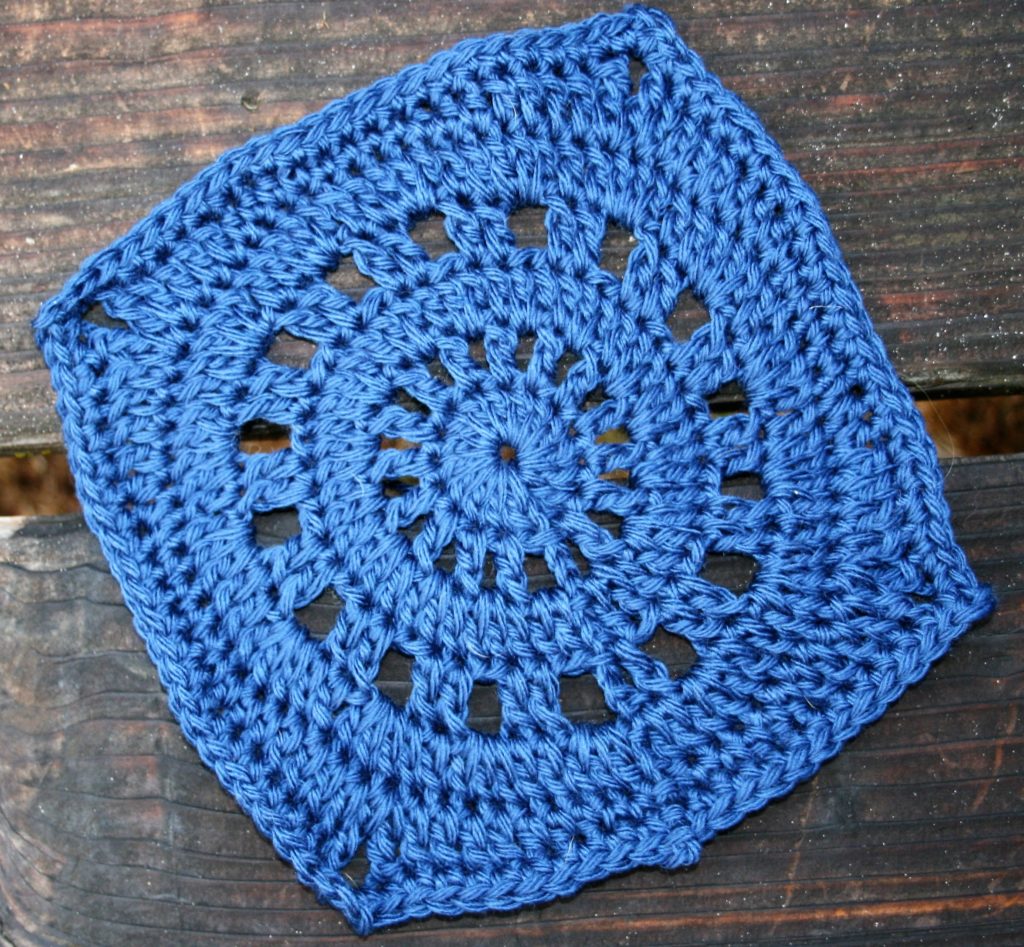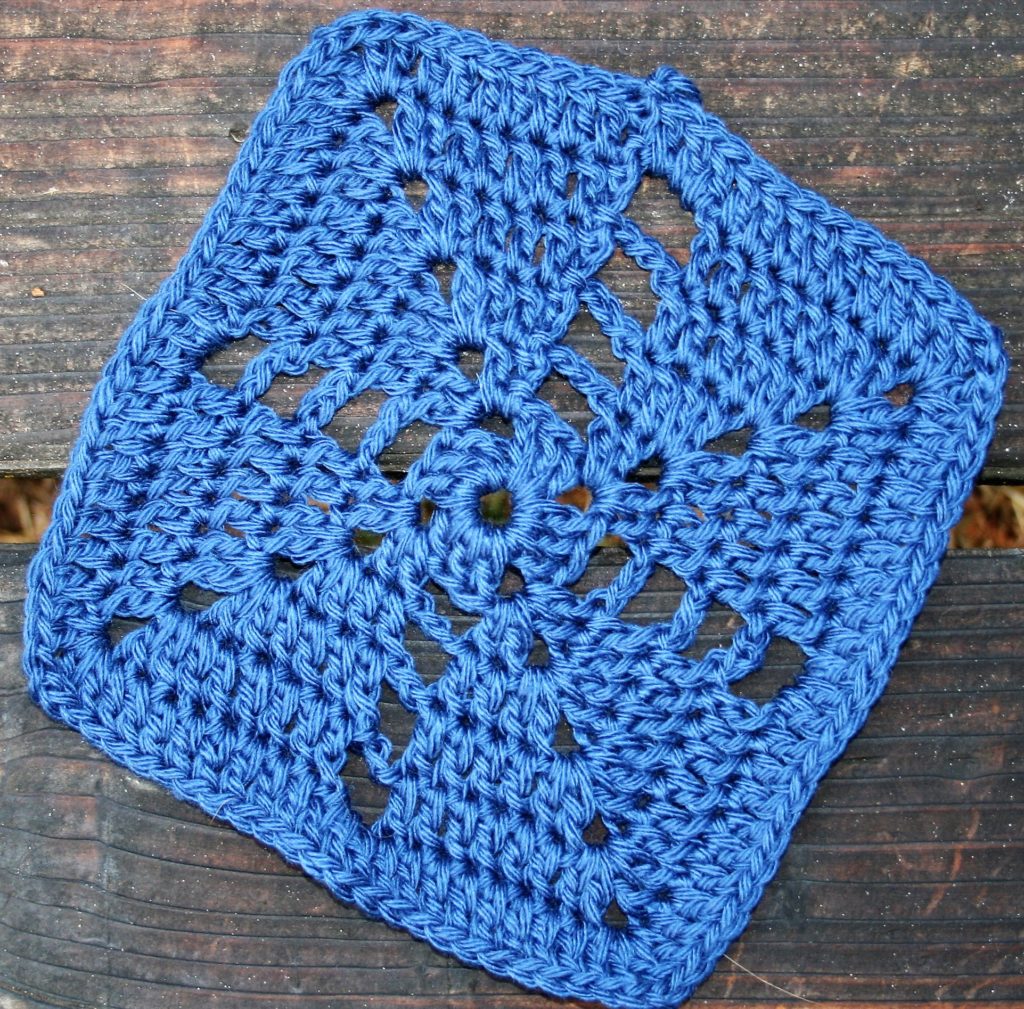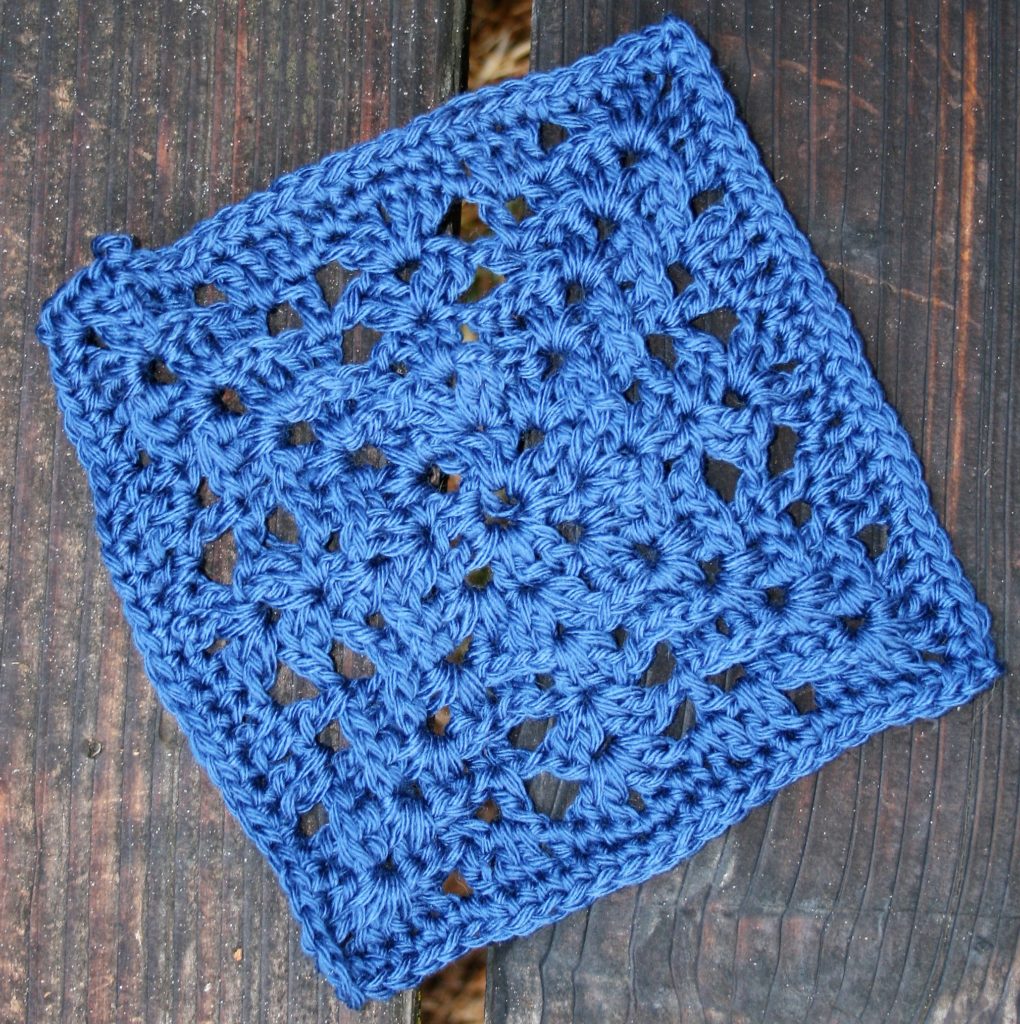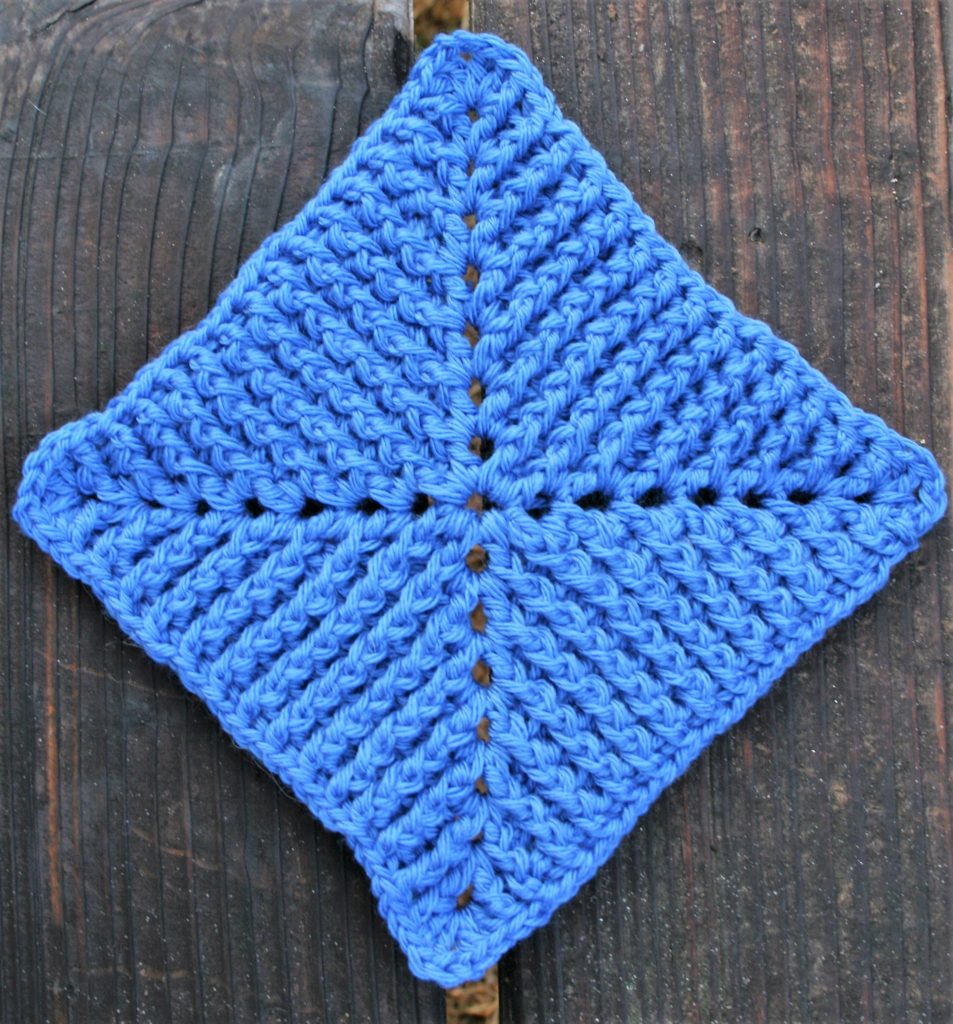Over the last several weeks I have been doing a lot of work creating new design blocks for charity. These blocks can be used as you see fit to benefit others.
Materials
- Cascade Yarn Pacific medium weight yarn, 60% acrylic/40% superwash merino wool (100g/3.5oz/213 yrd/195 m)
- Hook size I/9/5.5mm, unless otherwise specified
Block measures 7″ x7″
Compass Block for Charity
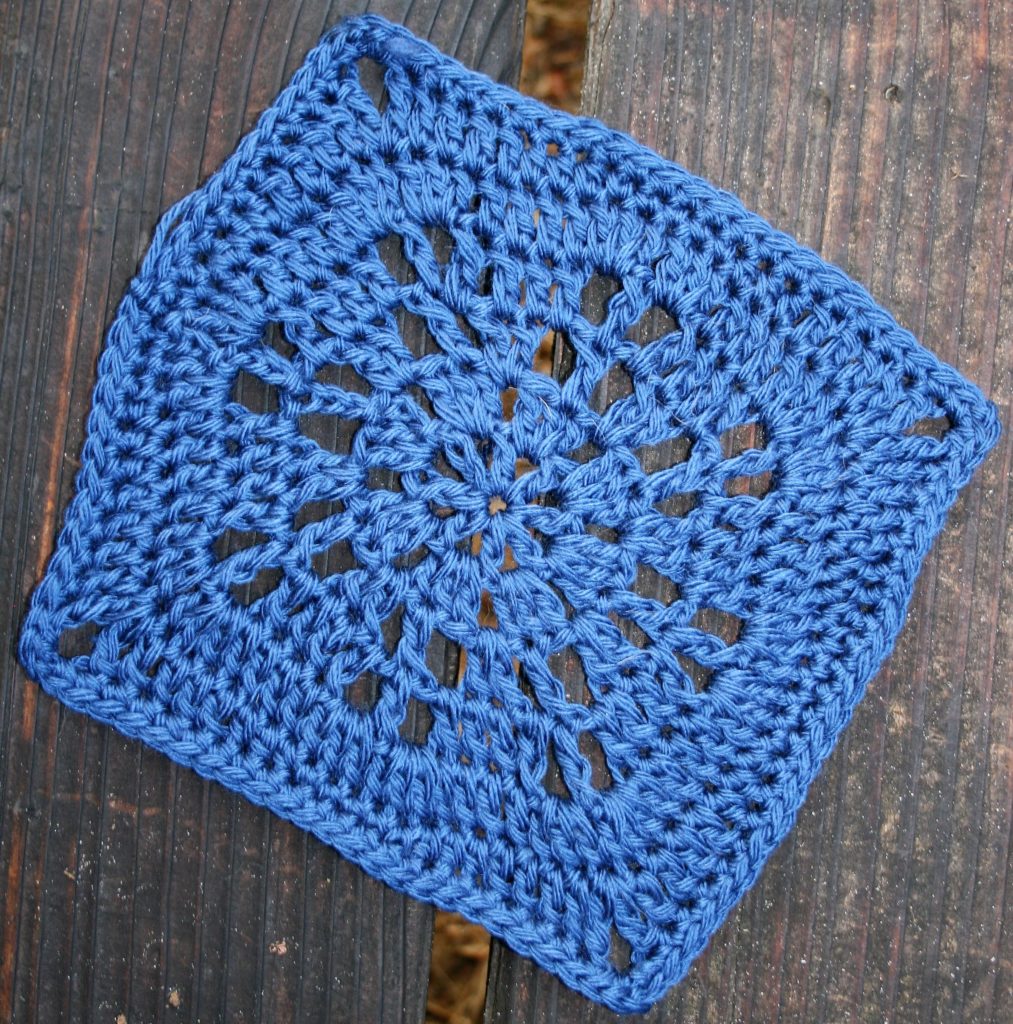
Rnd 1: Ch 5 (counts as dc + ch 1), [dc, ch 1] 7 times in 4th ch from hook, sl st in 4th ch of beg ch-5 to join. –8 dc, 8 ch-1 sps
Rnd 2: Sl st in ch-1 sp, ch 3 (counts as dc), 2 dc in same sp, ch 1, [3 dc in next ch-1 sp, ch 1] 7 times, sl st in top of beg ch-3 to join. –24 dc, 8 ch-1 sps
Rnd 3: Sl st in next dc, ch 4 (counts as dc + ch 1), sk 1 dc, 2 dc in ch-1 sp, ch 1, [sk 1 dc, dc in next dc, ch 1, 2 dc in next ch-1 sp, ch 1] 7 times, sl st in 3rd ch of beg ch-4 to join. –24 dc, 16 ch-1 sps
Rnd 4: Ch 5 (counts as dc +ch 2), dc in ch-1 sp, dc in next 2 dc, dc in ch-1 sp, ch 2, [dc in next dc, ch 2, dc in ch-1 sp, dc in next 2 dc, dc in ch-1 sp, ch 2] rep around, sl st in 3rd ch of beg ch-5 to join. –40 dc, 16 ch-2sps
Rnd 5: Sl st in ch-2 sp, ch 3, 2 dc in same sp, dc in next 4 dc, 3 dc in next ch-2 sp, sk next dc, [3 dc in next ch-2 sp, dc in next 4 dc, 3 dc in next ch-2 sp, sk next dc] around, sl st in top of beg ch-3 to join. –80 dc
Rnd 6: Ch 1, sc in same st, sc in next 2 sts, hdc in next 3 sts, dc in next 4 sts, [(tr, ch 2, tr) in next st, dc in next 4 sts, hdc in next 3 sts, sc in next 5 sts, hdc in next 3 sts, dc in next 4 sts] 3 times, (tr, ch 2, tr) in next st, dc in next 4 sts, hdc in next 3 sts, sc in last 2 sts, sl st in first sc to join. –8 tr, 4 ch-2 sps, 32 dc, 24 hdc, 20 sc
Rnd 7: Ch 1, sc in same st, sc in each st across to ch-2 sp, [(sc, ch 2, sc) in ch-2 sp, sc in each st across to next ch-2 sp] 3 times, (sc, ch 2, sc) in last ch-2 sp, sc to end, sl st in first sc to join. 92 sc
Fasten off, weave in ends, block.

